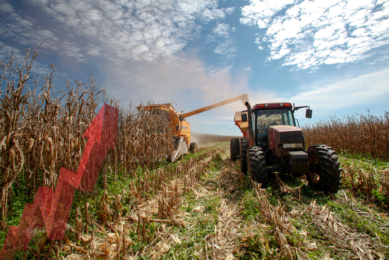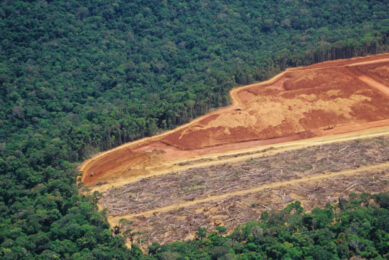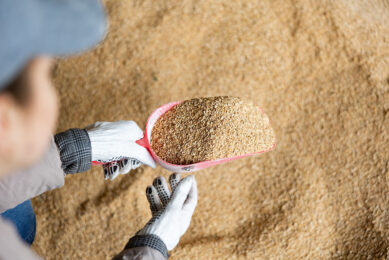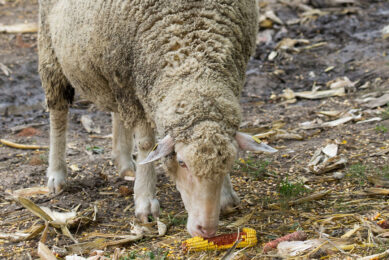The value of peels in poultry diets
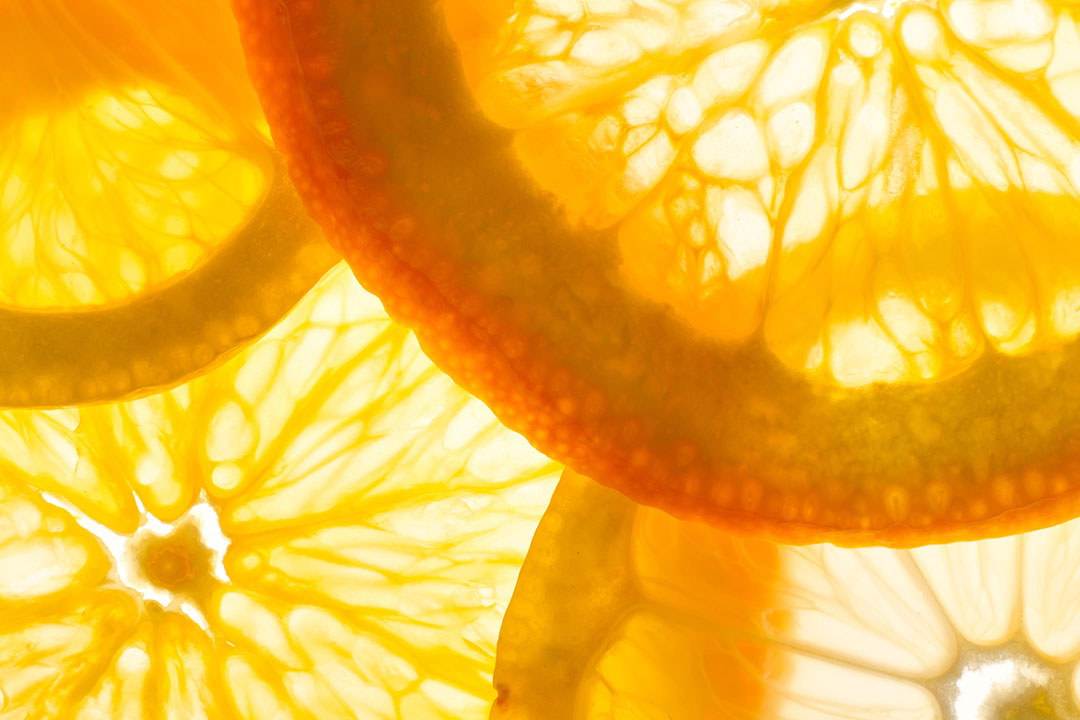
With external factors forcing an increased demand for poultry meat, alternative/low-cost feed ingredients are being used to try maintain global poultry prices. Here, the utilisation of selected peels in poultry diets, focusing on the chemical composition, dietary recommendations and prospects are reviewed.
The recent outbreaks of African Swine Fever have damaged pig populations, especially in China. As a result, global poultry demand will rise as consumers seek out other meats as an alternative. The higher demand for poultry products might lead to a rise in global poultry prices during 2019. Less costly alternative feed ingredients will be crucial to sustain the pressure on poultry feedstuffs. Peels from roots and tubers as well as fruit pulps might be valuable feed ingredients, considering the increasing interest in breeding crops for low anti-nutritional factors, advanced processing technologies and availability of enzyme products and anti-nutrient binding agents in the feed market.
Alternative energy sources
The expected increase in poultry production has a direct effect on the availability and price of feed. From 2005 to 2015 the price of maize has increased by 71%, according to USDA (2015). This indicates the importance of alternative energy sources to replace the regularly used sources in poultry diets. The processing of roots and tubers and fruits for food and industrial uses results in the disposal of the low economic value residues in the form of peels and pulps. Utilisation of these residues as feedstuffs will also have a positive impact on the environment.
Starch-rich roots and tubers are important food crops with an estimated global annual production of 836 million tonnes (FAO, 2013). With peel weight accounting for 15–20% of the tuber weight one can estimate the amount of peels that can be produced from the processing of these crops. Peel yield is still higher in most fruits than roots and tubers. Peel yields of 31% and 40% have been reported in papaya and bananas, respectively. In addition, huge quantities of these fruits may be wasted, about 30–40% of bananas are rejected due to defects and damage (FAO, 2012). Citrus pulp, the residue left after juice extraction, represents up to 50–70% of the fruit weight.
The benefits of selected peels
Cassava – The composition of cassava peel is affected by several factors including cultivar, stage of maturity and agronomic practices and environmental factors. Adesehinwa et al. (2011) reported a protein content of cassava peel meal of 30–60 g/kg, with the protein content being high in arginine. The peel is high in fibre (mainly NSPs), 140 to 340 g/kg. The major anti-nutritional factor in cassava is hydrocyanic acid, however, cyanide is highly heat labile and can be reduced below toxic levels by sun-drying.
Yam – Yam peel is an average source of energy with metabolisable energy values ranging from 11.3 to 12.6 MJ/kg. The protein content ranges from 91.4 to 127 g/kg. High starch content and higher starch digestibility have been reported in yam peel.
Sweet potato – Sweet potato peel is high in energy, moderate in protein and low in crude fibre. Abdel- Hafeez et al. (2018) found the value of crude protein and crude fibre to be 36–46 g/kg and 38–70 g/kg, respectively, and a metabolisable energy of 11.25 MJ/kg. Coloured varieties of sweet potato are good sources of carotenoids, this can reduce the need of pigment supplements for normal egg and skin pigmentation. Phenolic compounds have also been reported in sweet potato peels.
Citrus – Citrus pulp is a by-product of the citrus juice industry consisting of a mixture of citrus peel, pulp and seeds in different proportions. The cultivar of citrus and differences in juice extraction methods affect the composition of citrus pulp. It has a relatively high energy (11.4 MJ/kg) content and high fibre ranging from 123-135 g/kg DM. Protein content ranges from 620-740 g/kg DM. Low concentrations of protease inhibitors, phytate and tannins have been reported in citrus peel. The pulp has high levels of phenolic compounds which demonstrate strong antioxidant capability.

Banana – Diarra et al. (2018) found CP of 5% while Blandon et al. (2015) found 10% CP. The metabolisable energy content of banana peel ranges from 11.6-14.0 MJ/Kg in the unripe and ripe peels, respectively. The peel contains catechins which possess antioxidant, antimicrobial and cholesterolemic activities. Tannins have been reported to be the major anti-nutritional factor in banana peel.
Sugar beet pulp – Sugar beet pulp (SBP) is also another potential feed ingredient for poultry feeding but its utilisation is limited by the low ME and high fibre content and high water-holding capacity of the fibre. Abdel- Hafeez et al. (2018) found a content of about 3 MJ ME/kg, 9.6% crude protein and 19% crude fibre (mainly in the form of NSPs).
Papaya – Papaya peel protein is like that of maize, but it is relatively high in fibre and low in fat. High concentrations of proteolytic enzyme (papain and chymopapain), vitamins, minerals and β-carotene have been reported in papaya. Due to presence of polyphenols, papaya peel is reported to have anthelmintic, antibacterial and anticoccidial activities. Anti- nutritional factors include tannins, alkaloids, saponins and flavonoids. Table 1 shows the nutrient composition of the peels drawn from different sources.
Peels in broiler and layer diets
There are several studies on the feeding of peel meals to poultry, but recommendations have been quite variable. Several factors including differences in the composition of the peel (nutrient and anti-nutrient contents), processing methods, age of birds and diet composition may all affect utilisation of peel meals by poultry. The following shows a summary of some recommendations from different studies:
Cassava peels
Inclusion of 200g of cassava peels/kg feed does not compromise growth in broilers. Dairo (2011) reported improved weight gain and feed efficiency in broilers fed 500g/kg dietary sun-dried cassava peel compared to control. In another study, Panigrahi (1996) suggested that low hydrocyanic acid (<4 mg kg) cassava cultivars can be included up to 500–600 g kg without affecting performance. more recently, dayal et al. (2018) observed that inclusion of sun-dried cassava peel meal at 154g kg diet adversely affected broiler performance but this was overcome by fat and enzyme supplementation.>
Yam peels
Broiler chick growth was not compromised when yam peel meal was included at 150g/kg diet. Ayodele (2011) observed that yam peel meal at 250g/kg diet was optimum for broiler growth and carcass traits. Diarra et al. (2012) recommended a yam-sweet potato peel mixture (1:1 wt/wt) at 68 and 224 g/kg diet for starter and finisher broilers, respectively. It was concluded that a yam-sweet potato peel mixture can replace maize up to 15 and 45% in broiler starter and finisher diets, respectively, without adverse effects on the growth, haematological profile and carcass measurements.
Sweet potato peels
Maphosa et al. (2003) advised that sweet potato peel meal should not be fed to broiler starter feeds but could be included up to 310g/kg diet in the finisher diets. More recently, 150g/kg diet was recommended by Abdel- Hafeez et al.

Sugar beet pulp
A 2015 study observed that 23g/kg was optimum for broiler growth and a more recent trial found that enzyme supplementation can allow the utilisation of the pulp up to 75g/kg diet in broilers.
Citrus pulp
Feeding 20g/kg citrus pulp meal diet was reported to improve the productivity and health of broiler chickens. Trials have shown that inclusion of 50g/kg citrus peel in diets of broiler chicks resulted in similar growth performance to the control group based on maize. Another trial reported that sweet orange peel can be included up to 79.2g/kg diet in broiler diet without adverse effects on performance.
Banana peel
Abel et al. (2015) recommended 100g/kg sun-dried banana peel meal in the diet for broilers. Additionally, Blandon et al. (2015) observed that enzyme supplementation allows the utilisation of air-dried banana peel meal up to 340g/kg. Furthermore, the effect of replacing 15, 30 or 45% of yellow corn with dried banana peels was not detrimental to growth performance, carcass characteristics and haematological parameters.
Papaya peel
Papaya peel meal at 120g/kg feed had no adverse effect on broiler growth. In terms of layer diets, several factors including the source of cassava peel, processing and age of birds may all affect the composition of cassava peel and its recommendations in the diet. Table 2 shows recommendations of selected peels in layer diets.
The future of peels
The huge world production of root/tuber and fruit crops to meet the increasing world demand for food and industrial uses indicates high availability of peels – if properly processed and stored. The utilisation of this waste in poultry feed would reduce feed cost and the potential environmental risks. Peels have moderate nutrient content, which makes them potential ingredients in poultry diets. This, coupled with the advances in processing technology to reduce anti-nutritional factors, would see an added value to peels for poultry feeding.
With the growing market and availability of feed additives (exogenous enzyme products, amino acids, antioxidants, anti-nutrients binding agents) and research interest into phytobiotics by the feed industry, the future use of peels is brighter. Less variable recommendations on inclusion rates would be better established. Besides the nutritive content, several functional properties (antioxidant, antimicrobial, cholesterolemic, etc.) are available in peels, this may further increase their use to produce consumer-friendly poultry products.
References available on request.




